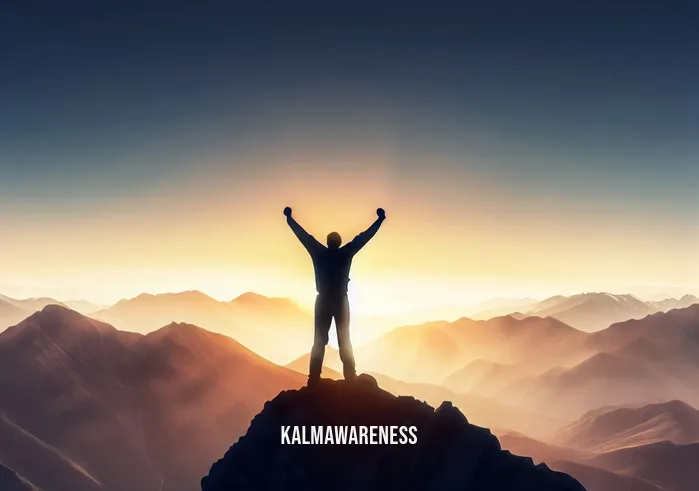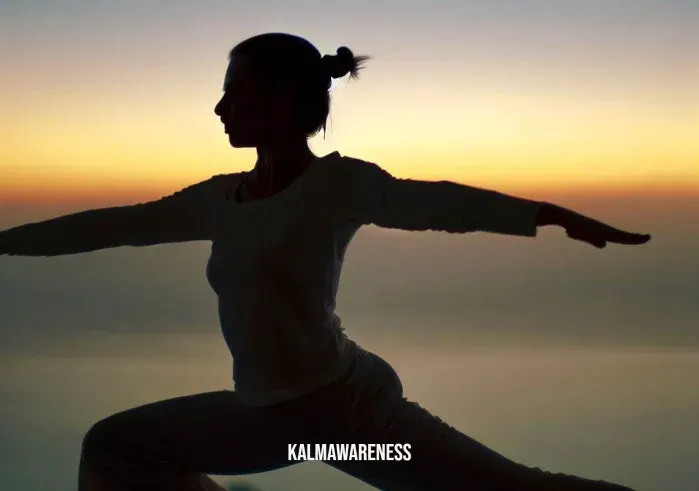Train the Mind to Respond, Not React: Laying the Foundation
In our fast-paced world, emotional upheavals can be frequent, and they can take a toll on our mental well-being. How we respond to these stressors can make a world of difference in our quality of life. To train the mind to respond, not react is to cultivate a practice that echoes mindfulness, emotional regulation, and self-control.
The Premise of Mindfulness
Mindfulness is the practice of bringing one’s attention to experiences occurring in the present moment. It involves grounding oneself in the current situation, free from judgment and the chaos of past regrets or future anxieties. As you delve into this realm, you’ll find that it isn’t just about meditation, but also extends to mindful movement for sleep and even mindful hypnobirthing, demonstrating its adaptability and vastness.
Emotional Regulation: A Must-have Skill
Emotional regulation is the ability to effectively manage and respond to emotional experiences. It does not imply suppressing emotions but understanding and channeling them appropriately. Remember, it’s not about what happens to you but rather, how you react or, preferably, respond to it. For instance, encountering a stressful situation, instead of reacting impulsively, one might take a deep breath or count to ten. This leads us to realize that at the very heart of emotional regulation lies the core principles of mindfulness.
The Power of Breathing and Meditation
Breathing, often overlooked, is a powerful tool in the journey of training the mind. The mere act of taking a conscious breath can calm the agitated mind and allow one to attain a peaceful state. It’s a gateway to meditation, a practice that dives deeper into the exploration of one’s mind and consciousness.
Meditation isn’t one-size-fits-all. While some find solace in traditional seated meditation, others might find that they can meditate lying down. There are numerous techniques, from Jack Kornfield’s approach for beginners to more comprehensive ones like sustainable self-care.
The Art of Response Categories
In our quest to train our mind, we also come across different response categories. These are the varied ways we can choose to respond to a situation, be it through action, inaction, or redirection. Each category provides a different outcome and learning about them will be instrumental as we delve deeper into the subsequent chapters.
The Journey Ahead
As we embark on this journey to understand and harness the power of our minds, we’ll further explore topics such as the element of some meditation exercises, the spiritual benefits of mirror gazing, and the significance of gratitude meditation before sleep. Each of these components offers a unique perspective and tool for our mental arsenal.
Cultivating mindfulness and training the mind to respond rather than react is more than just a practice—it’s a way of life. It’s about reshaping the mind’s architecture to handle life’s challenges with grace, resilience, and wisdom. And while this introduction offers a glimpse into this vast topic, there’s so much more to explore and understand.
Stay with us as we dive deeper, offering tools, insights, and techniques to truly master the art of response. You’re not merely reading an article; you’re embarking on a transformative journey. To deepen your understanding and to gain more practical insights, continue reading in the next chapter.
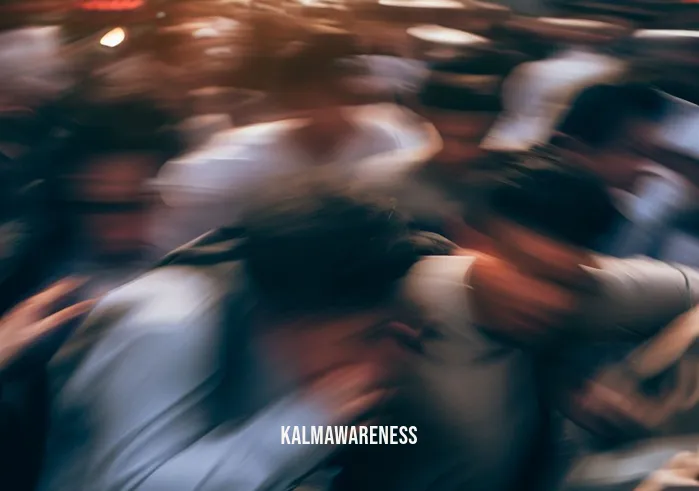
Embracing the Deep Dive: Harnessing Emotional Mastery
The journey to train the mind to respond, not react is both a science and an art. It’s a continual process that shapes our interactions, our decision-making, and our general well-being. While the foundation of this practice has been laid in the introductory chapter, let’s now navigate the depths and intricacies of emotional mastery.
Tools for Training the Mind
Emotional mastery is an amalgamation of various tools and techniques. These methods aim at enabling us to handle our emotions in a controlled and constructive manner:
Daily Meditation: This practice is not just about finding peace but also about understanding our emotional triggers. Meditation made simple can be a starting point for many.
Mindful Movements: Activities like teenagers walking or even Rouse Yoga can channelize the mind’s energy.
Reflection and Journaling: Keeping track of one’s thoughts and feelings can serve as a mirror, revealing patterns and triggers.
Engaging in Activities that Soothe: For some, this could be music, while for others, it might be mirror gazing for spiritual benefits.
Emotional Responses: A Closer Look
Emotions aren’t just random feelings that erupt; they follow certain patterns based on triggers and our past experiences. If we begin to recognize these patterns, we can better equip ourselves to handle them.
| Emotional Trigger | Typical Reaction | Trained Response |
|---|---|---|
| Criticism | Defensiveness | Seeking Feedback |
| Unexpected Change | Anxiety | Adaptability |
| Personal Failure | Self-blame | Learning & Growth |
| Overwhelm | Shutting Down | Prioritizing |
| Unmet Expectations | Frustration | Reset & Reframe |
By internalizing this table, we recognize that every emotion, when approached with a trained mind, can be channeled in a productive direction.
The Ripple Effect of Emotional Mastery
Training one’s mind to respond rather than react doesn’t just benefit the individual; it creates a ripple effect:
Enhanced Relationships: With better control over emotions, misunderstandings decrease, leading to healthier relationships.
Boosted Productivity: A mind that isn’t constantly at war with emotions can focus better, enhancing productivity.
Holistic Well-being: Emotional well-being is interconnected with physical health. Training the mind can lead to holistic health benefits.
Empowered Decision Making: Decisions made from a place of calmness rather than impulsivity tend to be more informed and beneficial in the long run.
Growth Mindset: A trained mind is more open to learning from experiences rather than getting bogged down by them.
Bridging the Gap with External Support
As we engage in this journey, external support can play a significant role. Whether it’s through books like Jack Kornfield’s Meditation for Beginners or daily practices like one for each blessed day, there’s a plethora of resources to assist in this endeavor.
Onwards to Mastery
In this chapter, we’ve unearthed the layers of emotional mastery and the tools to achieve it. However, there’s still a horizon to explore. How can we ensure that these practices are sustainable in the long run? What challenges might we face, and how do we overcome them? Dive deeper with us, as we unravel these aspects and more in the next chapter. Remember, emotional mastery is not a destination but a journey, and every step counts. Continue reading to make each of those steps more intentional and rewarding.
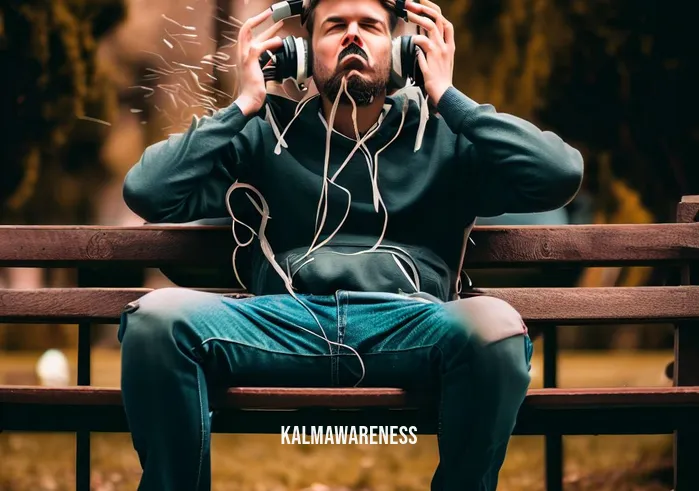
Anchoring Hope: The Inspirational Path to Emotional Mastery
The journey to train the mind to respond, not react isn’t linear. At times, the path can feel steep and overwhelming. However, throughout history and even today, countless individuals have shown us the transformative power of emotional mastery. Their stories, their wisdom, and their resilience offer inspiration and hope.
Glimpses of Inspiration
Maya Angelou: An American poet, memoirist, and civil rights activist, Angelou once stated:
“You may not control all the events that happen to you, but you can decide not to be reduced by them.”
Maya faced numerous challenges, from childhood trauma to racism. Yet, her resilience and her ability to respond with grace and wisdom made her a beacon of inspiration.
Nelson Mandela: Having spent 27 years in prison, Mandela emerged not with revenge but with a vision of peace and unity. He famously remarked:
“The greatest glory in living lies not in never falling, but in rising every time we fall.”
This epitomizes the principle of training one’s mind to respond with understanding and hope, even in adversity.
Malala Yousafzai: A Pakistani activist for female education and the youngest Nobel Prize laureate, Malala’s story is a testament to the power of resilience. She once said:
“When the whole world is silent, even one voice becomes powerful.”
Shot by a Taliban gunman for advocating girls’ education, she chose to respond by amplifying her advocacy, symbolizing the potential we all have when we decide to respond rather than react.
Real-life Reflection: Sara’s Journey
A modern example that deeply resonates with our topic is Sara, a young professional. She found herself constantly reacting to workplace stresses, family demands, and personal challenges. This reactive nature led to anxiety, strained relationships, and even physical ailments. Searching for a way out, she stumbled upon how to spell stabilize, a unique approach that combined mindfulness techniques with linguistic structuring.
Over months of practice and application, Sara noticed a shift. She began to respond – taking a moment before answering, practicing gratitude meditation before sleep, and adopting a perspective grounded in the judgment of the wise.
Today, Sara conducts workshops, sharing her journey and helping countless others realize that it’s possible to rewire one’s mind, to adopt a stance of response over reaction.
Infusing Hope into Practice
Harnessing inspiration is crucial, but how can we incorporate it into our daily lives? Here are actionable steps:
Daily Affirmations: Start the day with affirmations that resonate with emotional mastery. It sets the tone for the day.
Mindful Consumption: Consume content that inspires. Whether it’s a book, podcast, or even daily stories of hope from platforms like Jack Kornfield’s Meditation for Beginners.
Reflection: Take out a few minutes daily to reflect on instances where you reacted and consider how you could have responded differently.
The Path Ahead: Building Resilience
As we absorb the inspiration and insights from luminaries and real-life examples, the next chapter promises to delve into building resilience. How do we not just understand but solidify these principles in our psyche? How do we ensure that when challenges knock on our door, we are equipped, empowered, and enlightened to handle them with grace?
Unearth these tools, strategies, and the golden threads of resilience in the next chapter. Embracing the journey is just as vital as the destination. Continue reading to make every step of this adventure informed and intentional.

Unraveling the Layers: Dissecting the Practice of Emotional Mastery
To truly train the mind to respond, not react, we must delve deep, dissecting each component of this transformative practice. By understanding its various facets, we can better implement, adapt, and benefit from its teachings. In this chapter, we’ll break down these components using structured lists and bullet points for clarity.
Essential Elements of Emotional Mastery
Awareness: The first step towards change is acknowledgment. Recognizing our patterns, triggers, and habitual reactions sets the foundation.
Mindfulness: It’s more than a buzzword. It’s a conscious effort to be present, to touch that body part of our emotion and understand its essence.
Self-compassion: Before we can extend understanding to others, we must offer it to ourselves. This involves accepting that we’re a work in progress.
Strategies & Techniques: Armed with awareness, we then explore various tools, like deep dives into meditation, to navigate our emotional landscape.
The Process: Step by Step
Self-Reflection: Begin with introspection. Identify moments when you’ve reacted impulsively.
Understanding Triggers: What situations, words, or actions usually elicit a reaction from you? Recognizing these can help you prepare and navigate future instances.
Implement Techniques: Once you’ve identified triggers, match them with mindfulness techniques that can help. For instance, if a particular conversation topic is triggering, perhaps a deep-breathing exercise beforehand can help.
Practice: Like any skill, emotional mastery requires consistent practice.
Seek Feedback: Regularly check in with trusted friends, family, or mentors. They can provide valuable external perspectives.
Iterate: Emotional mastery isn’t a one-size-fits-all. What works for one might not work for another. It’s crucial to continuously adapt and refine your approach.
Benefits: Beyond the Obvious
Enhanced Communication: When we respond, we listen better and express more coherently, leading to meaningful conversations.
Stress Reduction: Responding allows for clarity and reduces the mental turmoil often associated with knee-jerk reactions.
Better Relationships: With emotional mastery, conflicts reduce and understanding increases, nurturing relationships.
Personal Growth: Each moment of choosing to respond over react is a step towards personal evolution.
Societal Impact: Individuals practicing emotional mastery contribute positively to their communities. A society where members are understanding and responsive is harmonious and progressive.
Challenges & Overcoming Them
Old Habits Die Hard: Our reactive patterns are often years or decades in the making. Overcoming them requires patience.
External Pressures: Society often values quick decisions, which can sometimes translate to impulsivity. It’s essential to keep the broader goal in mind and not succumb to such pressures.
Overwhelm: The journey can sometimes feel exhaustive. Here, techniques like mirror gazing for spiritual benefits can offer solace and rejuvenation.
Preparing for the Culmination
As we dissect and understand the components of emotional mastery, we pave the way for holistic integration. But how do we ensure that these practices are not just understood but lived daily? How do we make them a part of our very essence? The final chapter promises to weave these threads into a coherent tapestry. Dive into the culmination of this journey in the next chapter, where we bring all the pieces together to craft a life of poise, presence, and purpose.
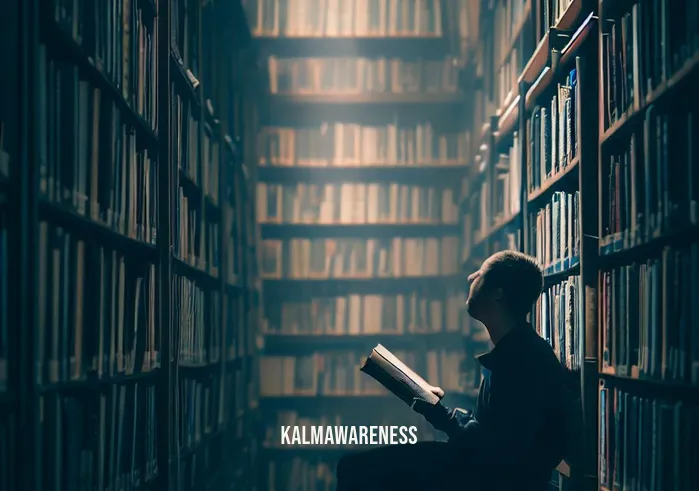
Reflecting on the Journey: The Heart of Emotional Mastery
As we come to the end of our exploration on how to train the mind to respond, not react, it’s crucial to pause, reflect, and cherish the insights gained. It’s been a rich journey, from understanding the foundational concepts to diving deep into strategies and real-life inspirations.
Key Takeaways
Awareness is the Starting Point: Before any change, there’s acknowledgment. Recognizing our behavioral patterns is the first step toward transformation.
Tools Abound: We’ve explored various tools, from mindful exercises to the power of gratitude. The key is to find what resonates and commit to it.
Inspirational Beacons: History and contemporary stories alike have shown us the immense power of choosing response over reaction. Let these tales be a constant source of motivation.
Emotional Mastery’s Ripple Effect: This isn’t a solitary journey. As we evolve, our relationships, communities, and society benefit.
Applying Knowledge to Real-life Scenarios
Conflict Resolution: The next time you find yourself in a heated debate, take a deep breath, remember the principles we’ve discussed, and choose to respond. You might find the situation de-escalates and solutions emerge.
Personal Growth: Set aside a few minutes each day for introspection. Reflect on your day, your reactions, and ponder on how you can better respond tomorrow.
Community Engagement: Share the wisdom! Host a small group discussion, or even an online forum, to discuss strategies, challenges, and victories in training the mind.
Your Next Steps
While we’ve covered substantial ground, the realm of mindfulness and emotional mastery is vast. We encourage you to revisit previous sections for clarity and to deepen your understanding. Additionally, explore how various meditation exercises can further aid in your journey. There’s always something new to learn, a fresh perspective waiting to be discovered.
A Heartfelt Thank You
Dear readers, your time, engagement, and commitment to personal growth are genuinely commendable. It’s readers like you who inspire us to curate such content, and we’re grateful for your presence. Rest assured, this is just the beginning. We promise to bring even more insightful, impactful, and transformative content in our future editions. Until then, cherish the journey, practice the art of response, and remember that every moment offers a chance for growth.
Should you wish to delve deeper or explore related topics, do browse through our extensive repository of content. There’s a world of wisdom waiting for you. As always, stay curious, stay inspired, and continue the journey of self-discovery.
